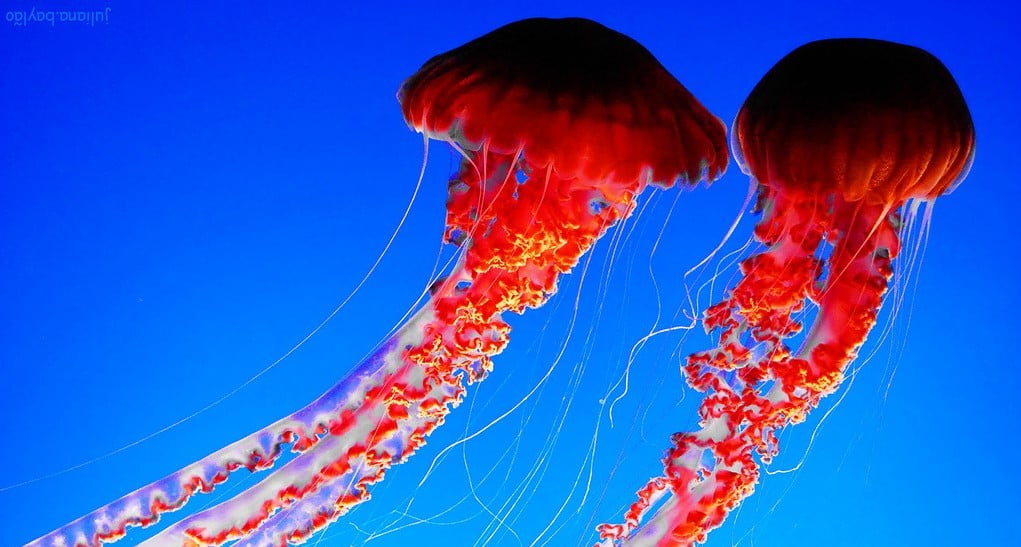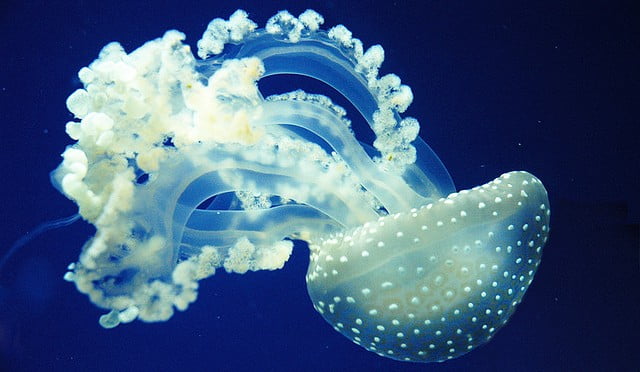In a United Nations report released in May, scientists worldwide were called upon to join the war on jellyfish. According to the report, jellyfish have overwhelmed the marine ecosystem as a result of the overfishing of more competitive species, consuming fish eggs and larvae of weaker specimens and creating what the report called a “vicious cycle.” So how can this cycle be stopped?
In order to prevent imminent marine disaster, Prof. Shahar Richter and his research team at Tel Aviv University have been successful in converting the plethora of jellyfish for more useful purposes. They devised a method of turning jellyfish into a resource that could be used in the paramedical, hygiene and perishable-product industries for the creation of environmentally safe medical treatments, advanced bandages, and other plastic products.
The jellyfish’s triple threat
According to another recent report, a bloom of jellyfish, spanning four square miles, devoured 100,000 salmon at a fish farm in Northern Ireland, causing damages of $1.5 million. And even though 450,000 tons of jellyfish are fished every year for the East Asian food industry, jellyfish consumption is far from effective in reducing or controlling the rapidly reproducing creatures’ population growth.
SEE ALSO: Will your next roll of toilet paper be made out of jellyfish?
“Jellyfish cause damage in three major areas,” Richter told the website Haaretz. “First, they clog up and paralyze atomic or electric power stations and desalination plants. In fact, they spell disaster for any facility that uses sea water. This happens in many places, including Korea, Japan, Sweden and India.”
Second, jellyfish have had a dramatic impact on the world fishing industry, snagging and blocking fishing nets with their massive size. The third industry to come under jellyfish attack is tourism. While jellyfish on Mediterranean shores cause painful burning at worst, the species off Australia’s shores are deadly, requiring the closure of beaches for extended periods.
Sign up for our free weekly newsletter
SubscribeUnderstanding the ‘essence’ of the jellyfish
A jellyfish consists of an umbrella-shaped bell and trailing tentacles; 90 percent of it is water. In studies, the researchers first cut off the tentacles and then ground the jellyfish to eliminate the water. The remaining substance consisted of two proteins useful in the biotechnological industries — collagen (found in human skin) and mucin (found in mucous tissues). The team developed methods to turn this jellyfish “essence” into composite materials, adding nanoparticles with useful properties, like electrical conductivity, anti-bacterial materials, medicines, and glowing substances.
SEE ALSO: Moshe Safdie is the designer of Singapore’s biodome that’s paving the way for green architecture
“The result is a composite biological material. Our innovation is proving that the material is perishable, so that if we bury it in the ground it will decompose, not pollute or cause environmental damage,” Prof. Richter told Haaretz. The team is currently examining industrial and commercial applications for the jellyfish material.
As Richter tells Haaretz, “One possible solution to the jellyfish problem, which has been adopted by the United Nations as well, is finding other uses for it beyond the food industry. When the materials we developed become applicable, they can help to solve the problem, serve various industries and provide fisherman with a living at times when they cannot fish.”
Prof. Shahar Richter is a researcher at TAU’s Department of Materials Science and Engineering and Center for Nano Science and Nanotechnology
Related posts

Resilient And Nutritious New Plant-Based Milk Aims To Make A Splash

Chocolate From Cultivated Cocoa Comes Without Environmental Toll

Plastic Fantastic: Startup Takes PVC Back To Its Crude Oil Roots





Facebook comments